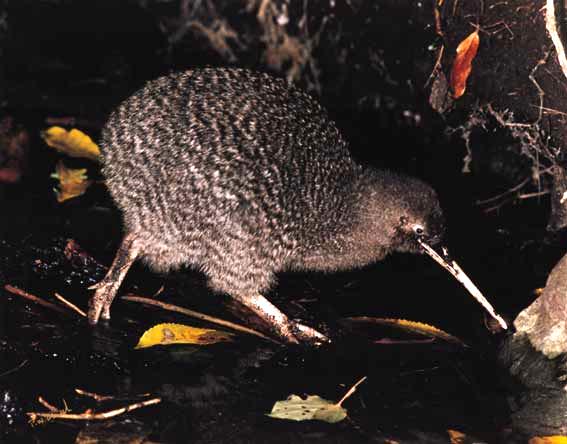Kiwi - Little Spotted
Scientific Name: Apteryx owenii
Sat, 12th July, 2025 - 5:20 am GMT
Sponsor Ads:

Alternative Name
Scientific Name: Apteryx oweniiBasic Info
The Little Spotted Kiwi looks very similar when compared to other Kiwi, except for the fact that it is smaller and has spots! It has a round, plump little body and a curved, long bill with olfactory cavities on the end that help it snuffle out food. Three powerful toes lead to long legs that help the Kiwi cross the forest floor and dig sturdy burrows for sleeping in. They have small eyes and very poor eyesight, relying on their nose to get them out of trouble and to keep their stomachs full. Little Spotted Kiwis have loose, shaggy-looking feathers.
Health
Breeding Despite their smaller size, the little spotted Kiwi also lays an egg a full quarter of its body size, one that takes almost three months to properly incubate.Habitat
N/ABehavior
The Kiwi is perhaps the most recognized bird in New Zealand. The Little Spotted Kiwi is known for being the smallest Kiwi, and sadly it is also the rarest, of all Kiwis. Kapiti Island does not house any of the Little Spotted Kiwi's natural predators, which may account for their larger presence on this island. They share many common things with other Kiwis. Little Spotted Kiwis are small, round, little birds with three toes for digging burrows, within which they sleep during the day. They will emerge at nighttime, and hunt for stray berries and worms underneath the ground, which they will pick out with their powerful little bills and tug at until they come out clean, in one solid piece.Origin
Kapiti IslandHistory
The Little Spotted Kiwi lives primarily on the Islands off the coast of New Zealand. Though they have been seen on Tiritiri Matangi Island, Red Mercury Island Mana Island, Long Island and Hen Island. Their largest numbers (approximately 1,000) have been seen on Kapiti Island. The Little Spotted Kiwi is very endangered, and there are only between 500 and 1500 birds remaining in the wild.Common Foods
N/ASponsor Ads:
The church saves sinners, but science seeks to stop their manufacture. -- Elbert Hubbard
Kiwi - Little Spotted
Coded by: BGID® | ALL RIGHTS RESERVED Copyright © 2000-2025
Disclaimer | Privacy | Report Errors / Contact | Credits
















